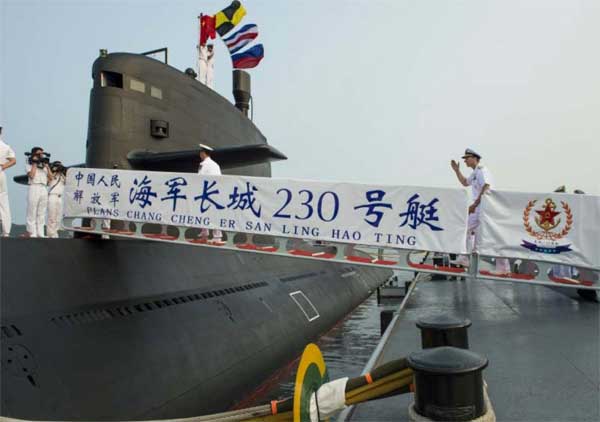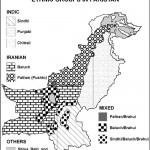IDR Blog
Cultural incompatibility in US analysis of PLA
While past does not determine the future, neither is it inconsequential. Acknowledgment of a mistake in the past does not mean it has been learned for non-repeatability. A whole lot adjustment in organisational culture, training and operational thinking is required over a period of time to absorb the lessons learned in the past.
For example, the central premise behind massive stock piling of nuclear weapons by US during the cold-War was that erstwhile Soviet Union is likely to fight its War in ways similar or same as US. This phenomenon is captured through the concept of “Mirror Imaging” in international politics. When it was realised that this was not the case, elimination of nuclear stockpile was possible under the Strategic Arms Reduction Treaty between US and USSR. This wisdom is somehow uncaptured in a study sponsored by “U.S.-China Economic and Security Review Commission” at the reputed RAND Corporation by select scholars which published its report on 11 February (Wednesday) titled “China’s Incomplete Military Transformation”.
According this report, “the PLA is increasingly capable of threatening its neighbors and holding U.S. bases and other high-value assets at risk, but shortfalls threaten its ability to accomplish many of its assigned missions”.
Unlike the preceding US reports on China’s defence mordernisation which focused on the growing strengths of the People’s Liberation Army (PLA), this report analyses the impressive but incomplete defence modernisation and ways to take advantage of this. The report highlights the inability of PLA to generate combat power necessary to initiate and win local wars under informationalised conditions, due the technological requirements in conducting joint operations.
PLA’s relation with the state and party (CCP) is also seen as a reason apart from combat weaknesses generated through logistical, insufficient strategic airlift capabilities, limited numbers of special-mission aircraft, and deficiencies in fleet air defense and anti-submarine warfare. Here too, as in the past, a objective driven US assessment of PLA either ignores or pays less weightage to the inherent cultural differences in the two societies and confirms to the Mirror Imaging phenomenon. For example, the PLA’s organizational structure is often portrayed as an obstacle to greater “jointness” and to the PLA’s ability to execute modern informatized military operations. This assessment is age old, for this interpretation continues since US experience of training nationalist forces during the second world war. It baffled US commanders in charge of training to see the posting of Chinese military officers based on a less understood cultural concept of guanxi, which was further interpreted as lack of professionalism. Guanxi is the personal network formed through common acquaintance for ensuring trustworthiness and reliability. If meritocracy was a rule and representation of professionalism, then the decision to dismiss US General Mc Arthur during the Korean War begs an explanation.
The required adjustments in undertaking informatised military operation does however require a specialised skill-based training where soldiers and officers retain high technical orientation. With emphasis on technical orientation, the non-combat potentials of the military personnel retards. Wining a war does not only involve “warfighting”, but a array of other faculty including intangibles such as the deep empathy for the cause of warfighting itself. For example, a major challenge confronted by the US forces fighting the Japanese military during second world War was the domain of “hand to hand combat”, where the US soldiers where found wanting before the fierce Japanese soldiers prepared for suicidal maneuvers. This combat power was generated by the relationship the Japanese soldiers shared with their emperor and selflessness born out of the deviated understanding of self and individuality.
US organisational culture on the other hand is derived from its political culture based on democratic liberalism and capitalism where the individual is a celebrated ideal. China’s apparent disconcern for high casualties and costs (Korean and Sino-Vietnamese Wars) and disjunctions between military action and political results (Sino-Indian and Sino-Vietnamese Wars) baffles orthodox analyst since the rise of liberalism and capitalism. The relationship between the PLA and CCP is most often analysed through the narrow prism of control and Influence without appreciating the historical context within which such a relationship formalised.
An often cited adage “political power grows out of the barrel of the gun” led to the view that Chinese idea of conducting politics was through the use of force. It is less appreciated that this adage is true to China’s domestic politics and not meant for foreign consumption. At the time when Mao was rising to power, China was controlled by multiple warlords with independent armed forces. Therefore in order to accumulate political power within China CCP had to rely on the use of force and create a armed wing of the party. This symbiotic relation between CCP and PLA has continued and unlikely to deform easily for the sake of adapting to informatised military operations.
The debate on assessing the relative military capabilities located within independent political and military culture dates back to the 17th century prior to which the Ottoman (Muslim) empire was considered relatively superior in its military training and organisational structure in comparison to the Byzantine (Christian) empire. For example it is recorded that the soldiers in Byzantine ranks trained imitating the marching style from the Ottoman soldiers. However with the advent of renaissance movement which led to emphasis on rational thought and outcast of religion as the governor of populace only to be replaced by the idea of state, put the Christian empire on a leap frog phase on development.
The renaissance movement brought along with it a range of social transformation including food and sexual habits. The idea of birth control unimaginable in the Muslim world introduced profound changes to the quality of Byzantine populace. Rationality undermined the religious discomfort with the development of science and technology which transformed the war fighting methods and increased the reliance on the material factors. The military adapted accordingly through changes in the method of training and organisational readjustment. Adding to these was the most lethal aspect of generating combat power – nationalism. While all these transformation where occurring, the Ottoman empire was not unaware and carrying out drills on mounted cavalry. The counter transformation process initiated by the Ottoman empire did not succeed for religious reason, for example the idea of birth control, segregation of the idea of state from religion and nationalism.
As time had it, the gap between the two widened to an unimaginable extent and has continued to this day where US forces can achieve their war objectives in Iraq and Afghanistan with less or nill casualty within a limited time frame.
Chinese historians and politicians have for many years pondered over the reasons for Chinese military defeats in war during the 19th century. Noted historian Hu Sheng, while contemplating over the question: “Why were the Chinese defeated with such ease in every battle?” says, according to Li Hongzhang (1823-1901), a high-ranking Minister in the late Qing Dynasty who was in charge of military, political, and foreign affairs, that inferior weaponry was the real cause of China’s defeat in the Sino-Japanese War.
However, Hu contradicts the statement saying: “In fact, the real reason for China’s defeat rested with Li’s attitude shared by his fellow bureaucrats advocating a ‘Westernisation’ movement”. While China has today transformed into a modern state with respectable military prowess and achievements in cutting edge military hardware which includes laser guided weapons, submarines, aircraft carriers, anti-ship ballistic missile, multi-role fighter jets and nuclear capable missiles, it only reflects the proliferation of science and technology and Chinese will and ability to put this to its advantage. The art of warfare has however reflected its strategic culture independent of the scientific revolution in military affairs.
Unlike the case of the Byzantine and Ottoman empire, China repeatedly declined the temptation for modernization even when located in circumstances detrimental to its core national interest for strategic reasons based on rationality. For example a fierce debate in Qing imperial court commenced with a breakout of rebellion in the modern day province of Xinjiang in 1870’s and a simultaneous threat by Japan to modern day Taiwan.
The requirement of budgetary allocation for naval force modernization to defend Taiwan at the cost of funding the expeditionary force to Xinjiang was overruled. Instead the court opted to settle the Taiwan crisis by negotiation and settlement with Japan and fund its ground forces to quell the rebel along its western border. China again declined a direct naval force modernization along western lines to meet with the European naval challenge which occupied Hong Kong and Macao. In Chinese strategic reasoning British occupation of Hong Kong did not represent a clear and present danger.
For Hong Kong to be militarily viable for British in detriment to China’s national interest required the ports in Singapore and Calcutta (India) to be under British control. Without refueling and supply of naval ships at these ports there was no way of conducting military operation from Hong Kong. Therefore in order to deal with the problem, the Qing administration recommended a strategy to displace support for British naval operation at Singapore and Calcutta, and there by avoid a costly plan for naval modernisation. Even in the present scenario while China has displayed impressive achievements in naval modernisation, it still relies on the strategy of discouraging its maritime neighbors to allow easy passes to US Navy by cooperating with them. Both Vietnam and Philippine have bargained successfully with China without balancing against it through US.
This recent report by RAND Corporation has reviewed a significant amount of Chinese sources and inducted the opinions of Chinese military leaders, analyst, academics, and policy makers to arrive at China’s own understanding of its weakness in military modernisation. By gauging PLA’s weakness an attempt is made to understand the future trajectory of its modernisation. While this does help in gauging the hardware part of China’s military modernization, it can be supplemented with the art of War, which includes hardware but not limited to it, to better clarify China’s military modernisation and future trajectory.
References:
- Andrew Scobell, China’s Use of Military Force: Beyond the Great Wall and the Long March(Cambridge: Cambridge University Press, 2003).
- Jonathan R. Adelman and Chih-yu Shih (1993), Symbolic War: The Chinese Use of Force 1840-1980, Taipei, Taiwan, Republic of China: Institute of International Relations, National Chengchi University.
- Stanley Sandler, The Korean War: No Victors, No Vanquished(London: UCL Press, 1999), p.115.
- Arthur Waldron in Mair H. Victor, The Art of War: Sun Zi’s Military Method(New York: Columbia University Press, 2007), p.xi-xxix.
- Michael S. Chase, Jeffrey Engstrom, Tai Ming Cheung, Kristen A. Gunness, Scott Warren Harold, Susan Puska, Samuel K. Berkowitz (2015), China’s Incomplete Military Transformation: Assessing the Weaknesses of the People’s Liberation Army (PLA), U.S.-China Economic and Security Review Commission: RAND Corporation, February, 2015.





